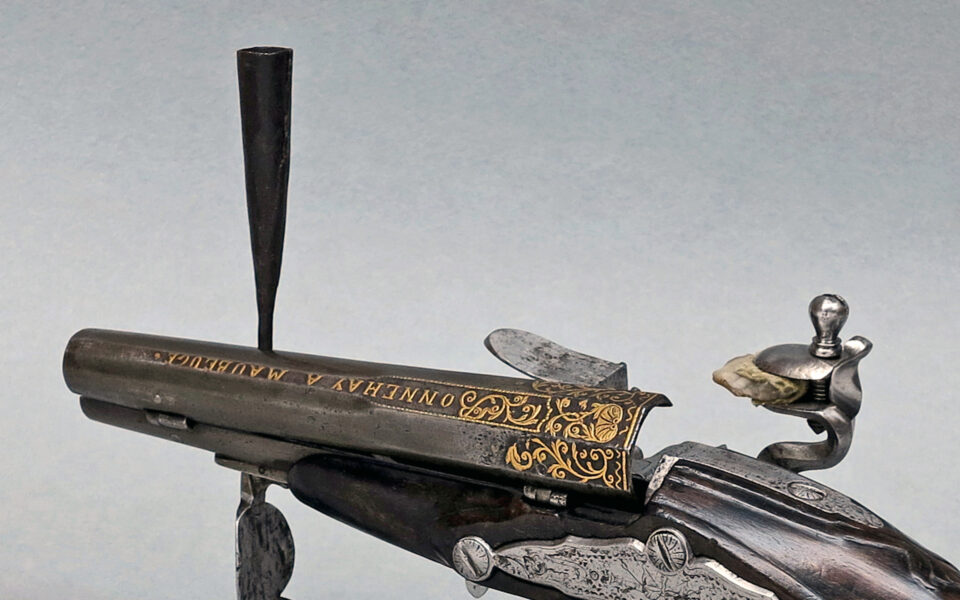
A very elegant Tinder Pistol
At first sight, this refined and curious object might look like a pistol but it is in fact a remarkable example of a mechanical tinder lighter designed for domestic use or, more precisely, a tinder-pistol.
The piece examined here just looks like a small pistol, with an elegantly shaped walnut wood body on which different metal parts are mounted (butt cover, trigger, flintlock mechanism, sideplate, barrel, candle holder and support): all parts are made of steel, engraved with elegant war motifs, vegetables, palmettes and flowers. The butt hosts a small chamber provided with a lid, designed to store flint and tinder reserve, the candle holder is regulated by a spring hinge inside the barrel as well as the violin-shaped support is spring hinged under the barrel and allows the tinder pistol to be stably placed on a table to be used as a candlestick.
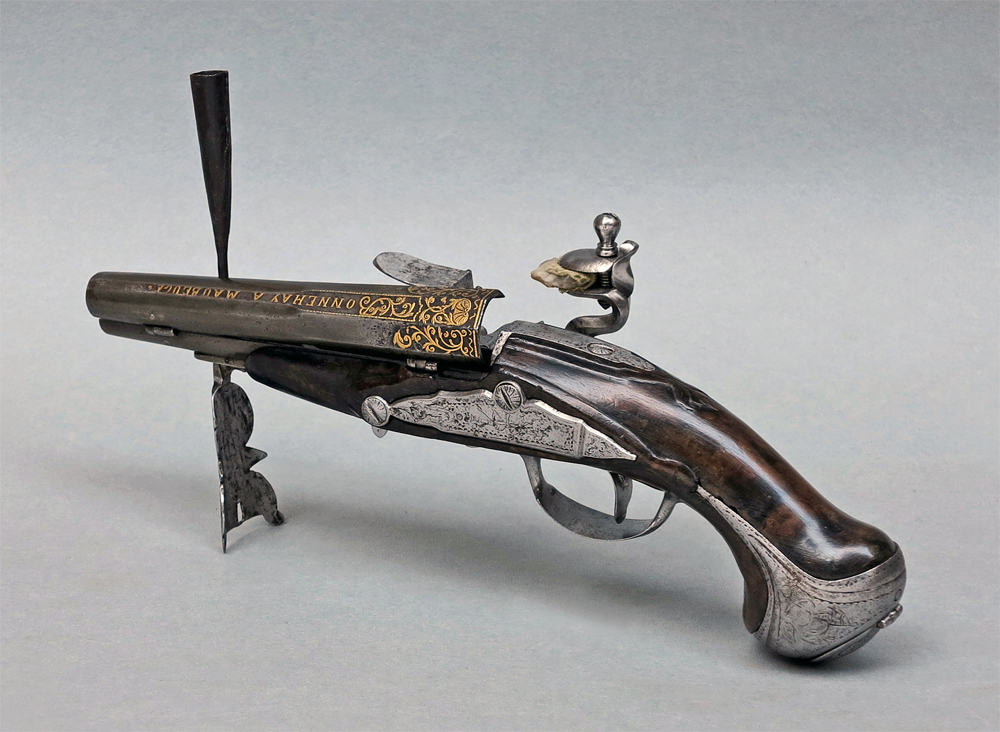
The first mechanical lighters, dating to around the mid 17th century, employed the same flintlock devices as arquebuses and pistols, and they were quite rough and simple. Some slightly sophisticated lighters appear later, but really refined and elegant versions are manufactured only in the full 18th century. On a practical level a tinder pistol basically works like a pistol in the barrel of which, instead of gunpowder, both the tinder and a small candle holder are housed. By pressing the trigger the flintlock mechanism is activated, which almost instantly ignites the wick of the candle; a fraction of second later, the barrel is uncovered, thus allowing the candle holder and the support to stand upright.
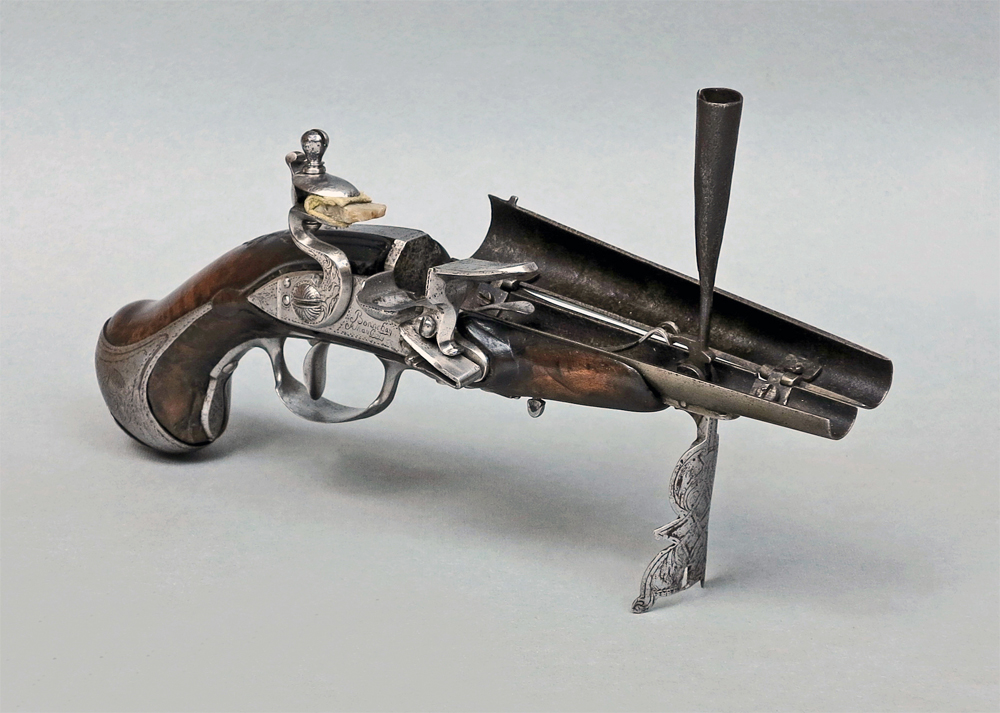
The sideplate bears the gunsmith’s signature, in italics: “Bonnehay à Maubeuge”. The same signature, in capital letters, is damascened in gold on the barrel – BONNEHAY A MAUBEUGE – togheter with elegant Louis XV style scrolls and a palmette.
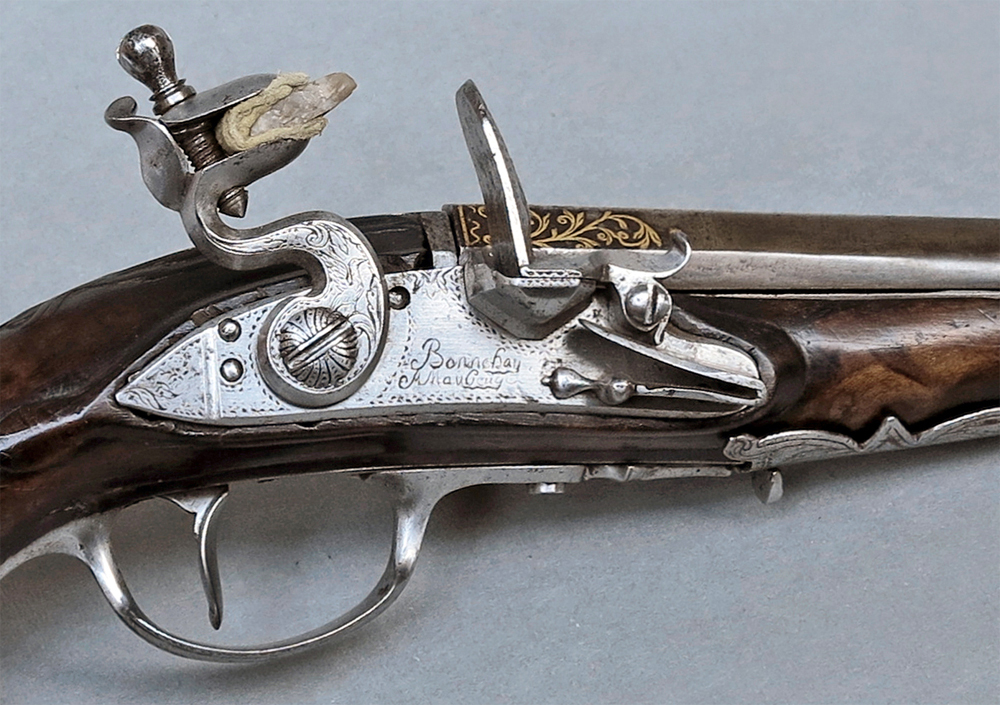
The French city of Maubeuge was famous in the early 18th century as the seat of an important Royal Manufactory of Weapons and the signature that appears on this tinder pistol, rather rare, corresponds to that of a poorly documented family of gunsmiths. A certain Monsieur Bonnehai (Bonney, Bonnechay, Bonnehay), is remembered as the master gunsmith of the Maubeuge arsenal, when he was appointed as inspector at the Manufacture for six months in 1754, and again in 1779 the sources speak of three members of the Bonnehay family in Maubeuge: E. Louis, Jean and Alexandre. Most likely, we owe to one of them the creation of this luxurious piece.
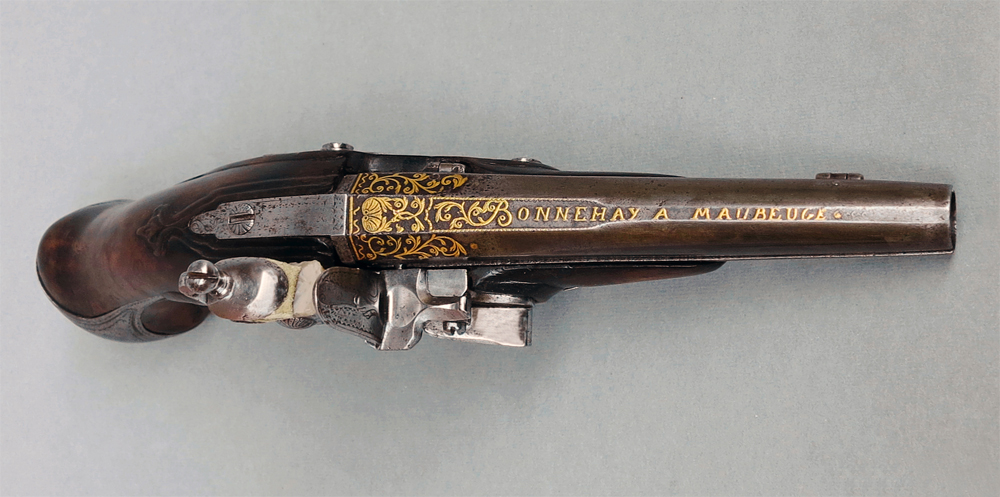
Among the high-quality tinder pistols we must certainly mention: a twin example to ours, housed at the Museum Le Secq de Tournelles in Rouen, and some notable ones preserved at the Wallace Collection in London, but the most significant nucleus is part of the important Bryant and May collection, exhibited for almost a century at the Science Museum of the English Capital.
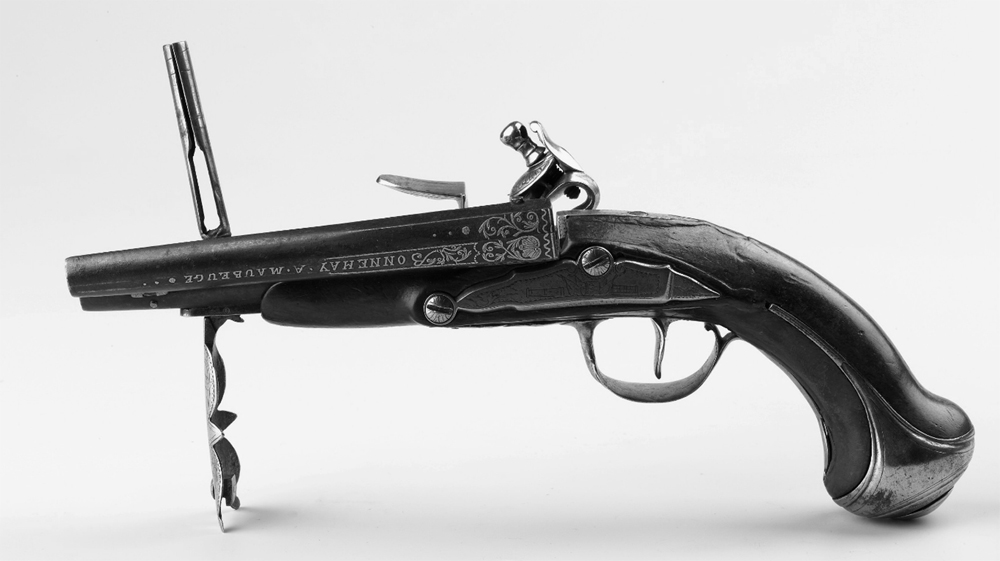
Sophisticated and expensive devices of this kind were, as always, intended for a small and wealthy minority of gentlemen, who used them to light fires, pipes or other candles in their homes but a tinder-pistol like this, signed by a gunsmith and richly decorated with the same care of a real firearm, is undoubtedly a top of its category.
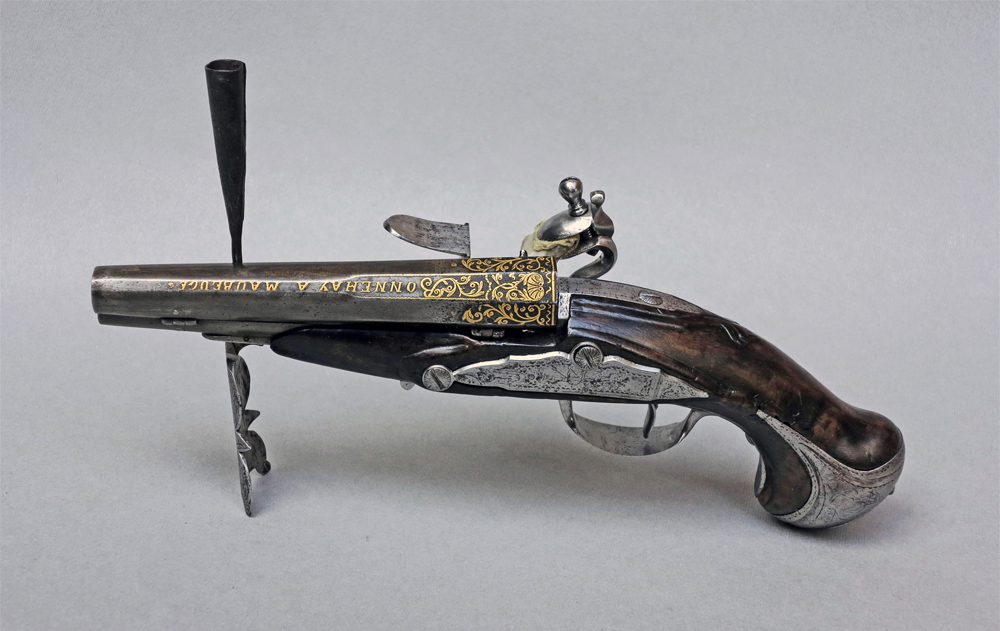
Bonnehay (armorers active in Maubeuge in the 18th century)
TINDER PISTOL
Engraved steel with gold damascening; walnut wood
Maubeuge (France)
Second half 18th century
Cm 25,5 x 15,5
Signed “BONNEHAY À MAUBEUGE”
Bibliography: V. Cacciandra, A. Cesati, Fire Steels, Allemandi, 1996, plate VIII (K), p. 128.
References: Christy, M., The Bryant and May Museum of Fire-Making Appliances, London: Bryant & May Ltd.,1926.
© 2013 – 2023 cesatiecesati.com | Please do not reproduce without our expressed written consent
Alessandro Cesati, Via San Giovanni sul Muro, 3 – 20121 Milano – P.IVA: IT06833070151